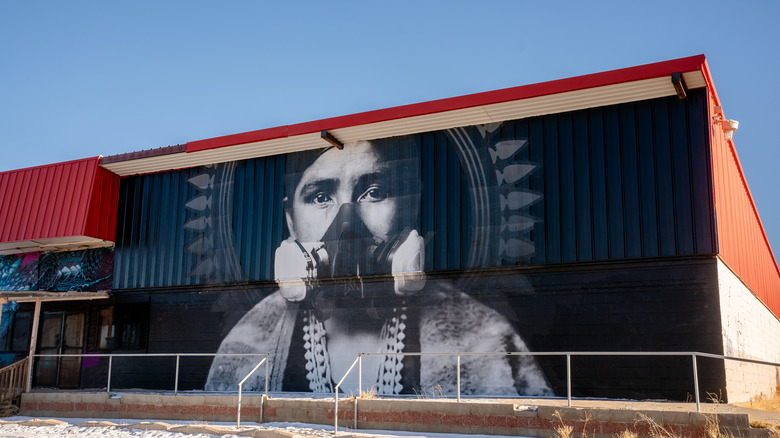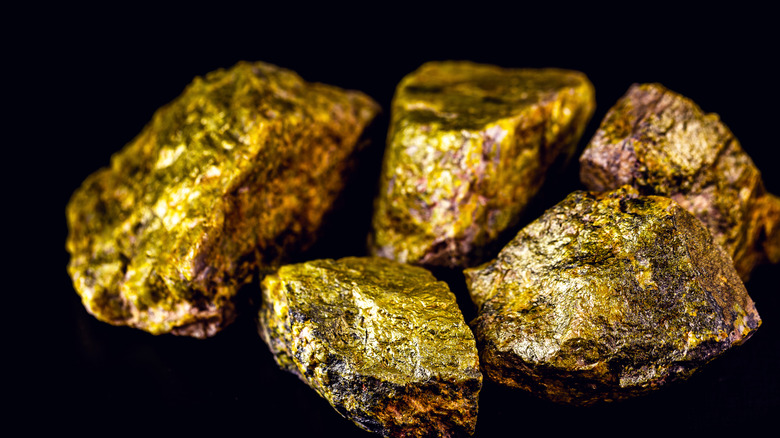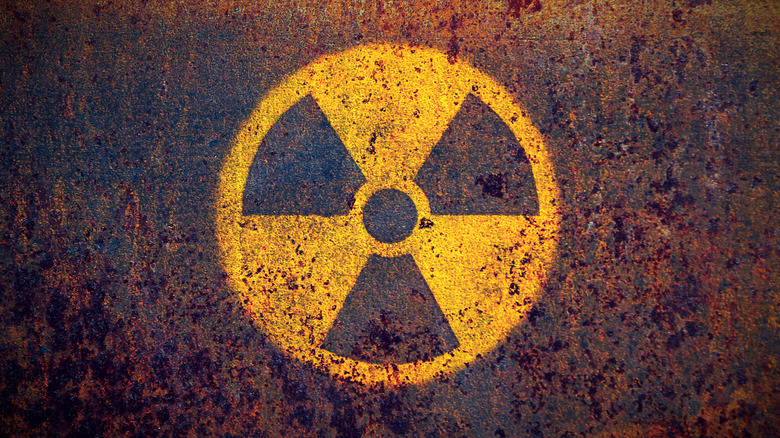A Look At The Navajo Nation's Connection To Uranium
Living in the post-atomic age, a lot of us tend to think of our technology as magic. How do our phones and computers work? We don't care, as long as they do — and never mind about the children mining coltan (via ABC) or the wage slaves building them in Chinese factories (via The Register).
Of course, the same has always been true for basically all technology more advanced than the wheel. Most of us are blinded by the cool shiny, new stuff, and miss out on the human cost — sometimes we're so excited about this X-ray technology, for instance, that we rush to put it into shoe stores (via Medical Design and Outsourcing) without looking into whether blasting your feet with radiation might have some long-term consequences.
Nuclear technology is no different — or at least was, early on in its history. There was something of a backlash (and arguably an excessive one), against it in the late-20th-century, but in the early days, a lot of us wanted to think of it as the new hotness that was going to solve all our problems. This was energy made with science! We were going to provide the whole world with cheap, clean energy!
Unfortunately, as with almost anything, there was a hidden human cost — and (surprise!) it was borne mostly by the poor and people of color.
The Navajo reservation provided a lot of the U.S.'s uranium supply
This should probably go without saying, but it turns out that when you run your power grid (and weapons arsenal) on uranium, that uranium has to come from somewhere. In the case of the U.S., that "somewhere" turned out to be the Navajo Nation located in the Four Corners area.
According to Cultural Survival, after World War II, large deposits of easily mined uranium — called "leetso" in Navajo, which more than one Navajo writer (including Esther Yazzie and Jim Zion at In Motion) have pointed out sounds an awful lot like "yeetso," or "big monster" — were discovered in Four Corners area, which led to something of a mining rush in the area. Numerous Navajo men were employed in the mines, which, according to Cultural Survival, was the area's first taste of the wage economy. The pay wasn't great, but for a lot of Navajo men, it beat raising sheep or making jewelry for tourists.
Unfortunately, the mines were run with almost complete disregard for the dangers of mining radioactive material, even as those dangers became well-known to the operators. According to NPR, radioactive water from the mines was pumped into unprotected pools where children were allowed to swim and livestock were allowed to drink. Families were allowed to build homes out of milling waste (via the Associated Press), resulting in homes up to 50 times as radioactive as nuclear waste sites. Even basic safety measures, like building ventilation into the mines to allow radon escape, went ignored.
The Navajo Nation is still bearing the brunt of the cost
The consequences of this exploitation are, of course, predictable. According to NPR, cancer rates in the Navajo Nation doubled between the 1970s and 1990s. Numerous Navajo have died of cancer and kidney failure, both of which are linked to radiation poisoning. 27% of Navajo have tested positive for uranium in their urine, compared with 5% of Americans on the whole, and babies born on the reservation have shown elevated levels of uranium in their tissue.
In 1990, Congress passed the Radiation Exposure Compensation Act, or RECA, in an attempt to provide monetary relief for victims of the nuclear program. Even after several amendments, though, the amount paid to those harmed could often be insultingly low — for instance, Cultural Survival quotes a woman whose sister was awarded $100,000, but, thanks to cancer caused by the radiation, needed a lung transplant that cost three times that much. "We are dying and nothing can be done about it," she said.
And even compensating the victims does very little to alleviate the environmental damage. According to Navajo chemist Jani Ingram (quoted in Chemical and Engineering News), wells throughout the reservation "exceeded maximum contamination limits" for uranium, along with numerous other heavy metals.
There is some good news. In 2017, the Environmental Protection Agency reached a settlement with two of the mining operations to commit $600 million to clean up the abandoned sites. Whether this will make much of a difference remains to be seen — but it's at least a start.


